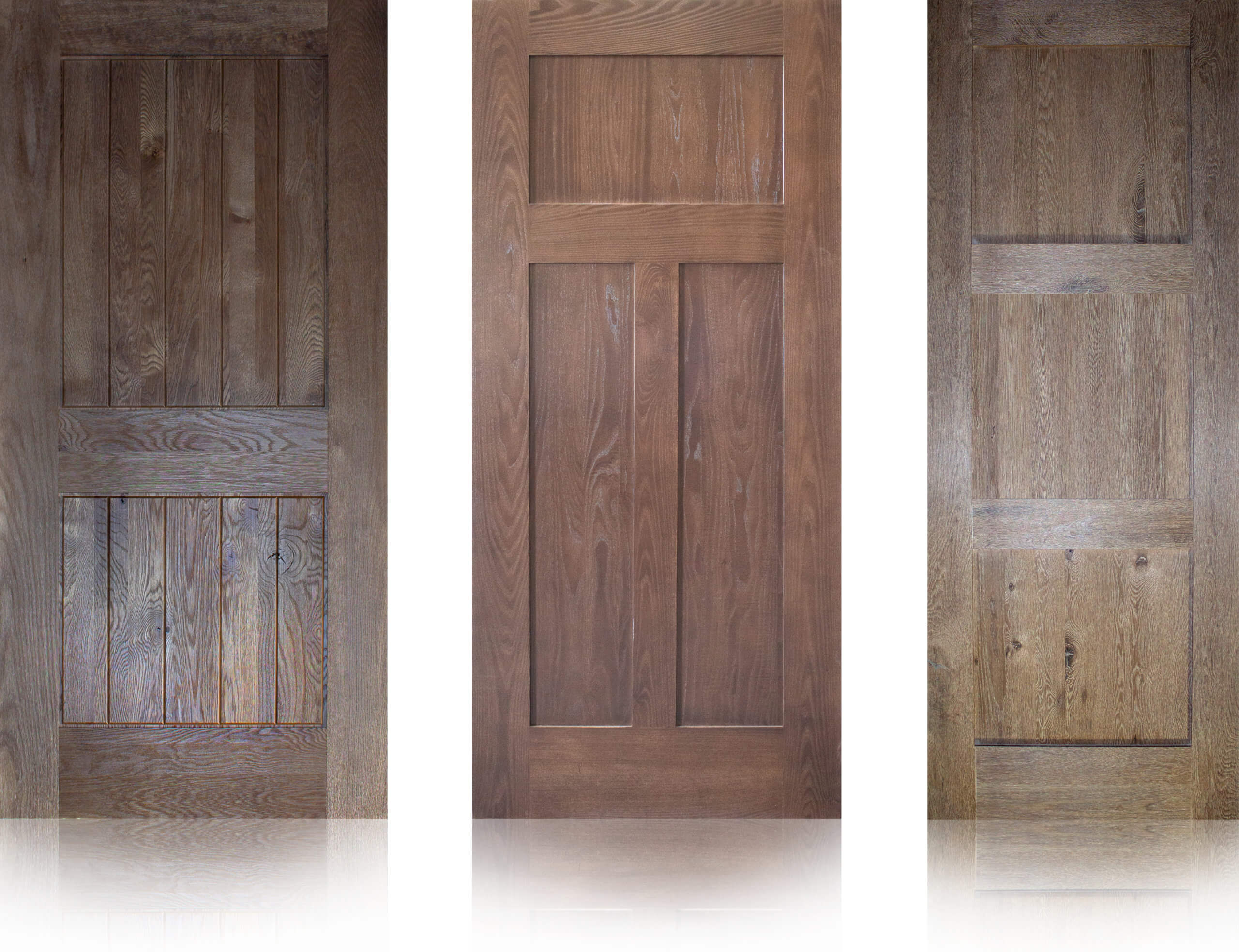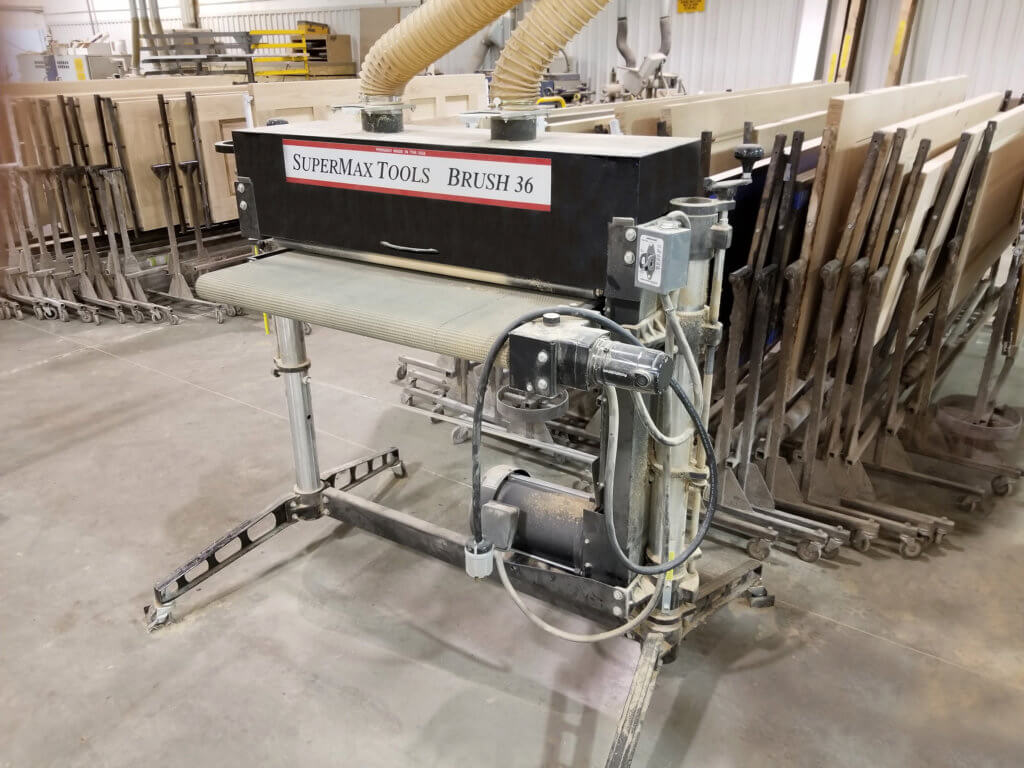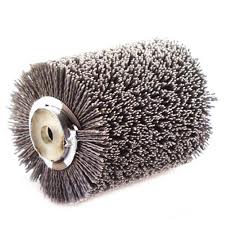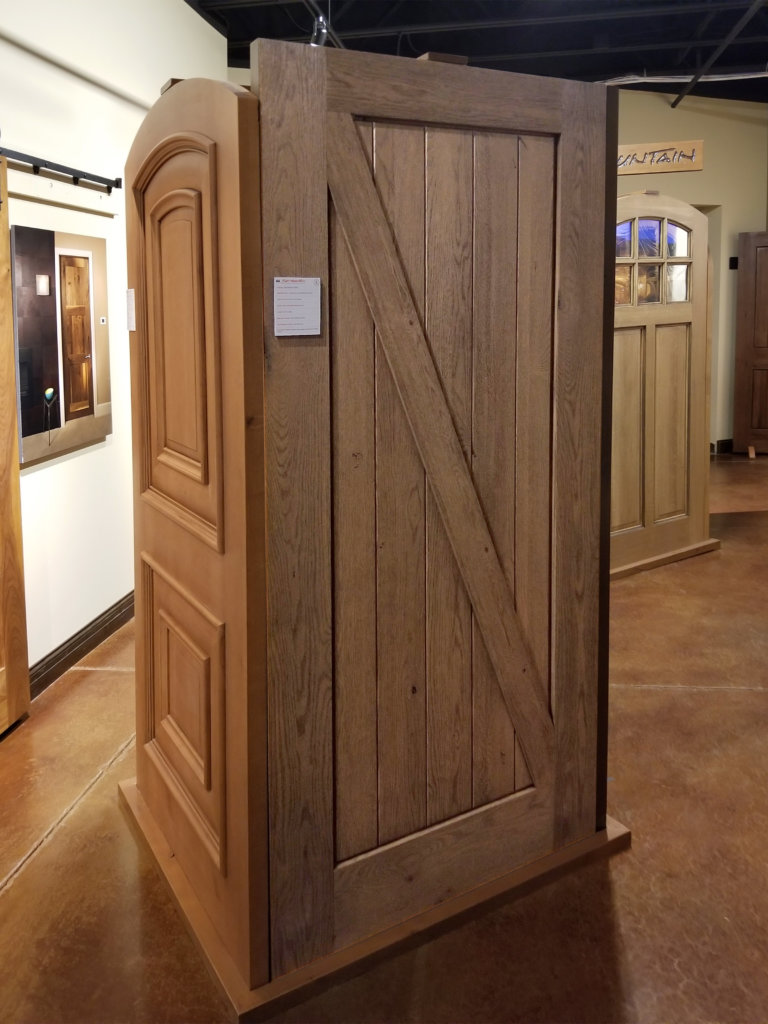
Unlike other wood distressing techniques that produce random scratches, cracks, “worm” holes, and planer chatter, wire brushed distress creates a soft, weathered look. This is an effective treatment for those looking for a unique, subtle, gently worn appearance on the doors of their home.


Sun Mountain’s process involves using a wire brush machine to remove soft summerwood fibers of the wood, which accentuates the harder grains and results in fine brush markings along the grain. The process works best on softwoods such as Pine and Cedar, but also works well on some hardwoods such as White Oak. Wire brushing of Alder wood is discouraged as this results in a “fuzzy” texture rather than a clean brushed look. Very dense hardwoods like Hickory and Mahogany cannot be wire brushed.

Wire brushing is completed on the door’s individual components—stiles, rails, and panels—before the door is assembled. As such, it may create up to a 1/16” variation in the face plane of the door where stile and rail components are joined together. Sticking, applied mouldings, and other elements with sloping profiles are not wire brushed, so doors with square sticking and flat panels are the best choice for this treatment. Wire brushed distress can also be applied to door jambs, wood mouldings, and wood beams.

Sun Mountain is renowned for its wood finishing, offering a broad selection of standard stains and glazes, or custom color matching to taste. The glaze is a compound (typically dark in pigment) that is hand-wiped on and off the stained door, shadowing profiles and edges to add visual depth. On wire brushed distress products, the glaze fills the fine brush markings, darkening the wood and making the product appear dark brown or black. Thus, with the exception of very light glaze colors (such as Sun Mountain’s Grays Peak and Glacier Point glazes), glaze finishes are not recommended on products with wire brushed distress.
